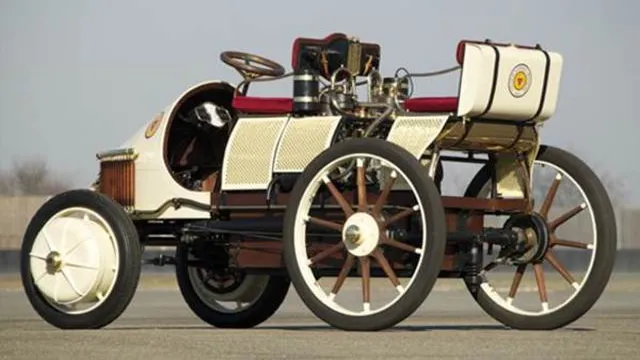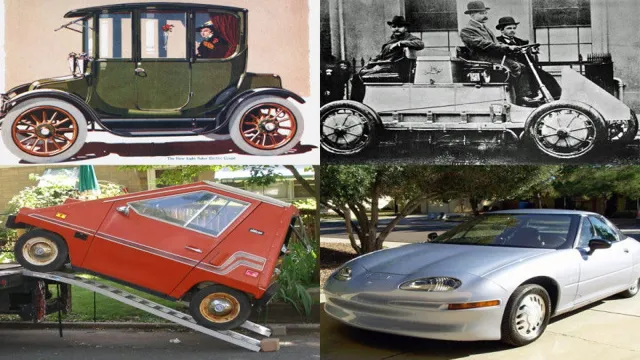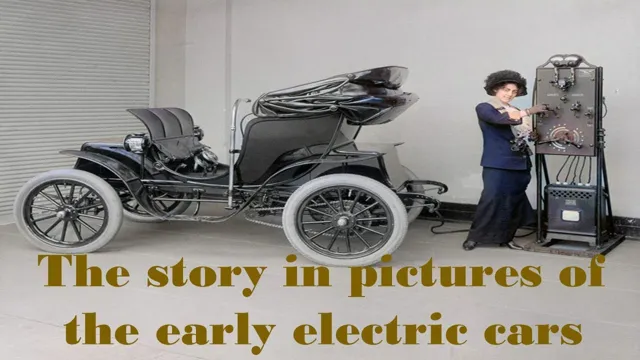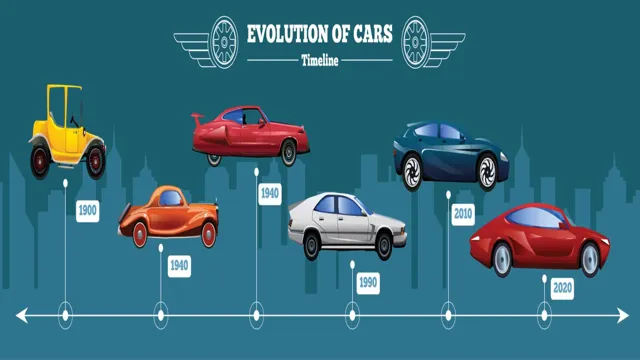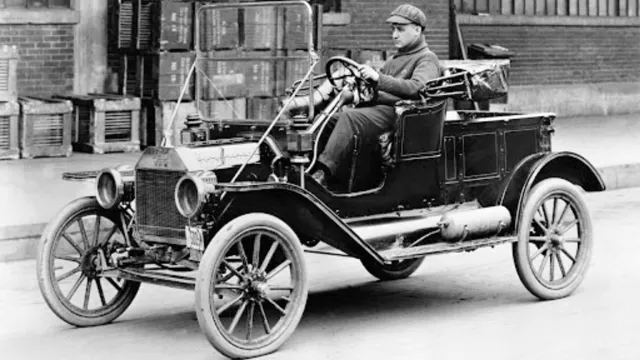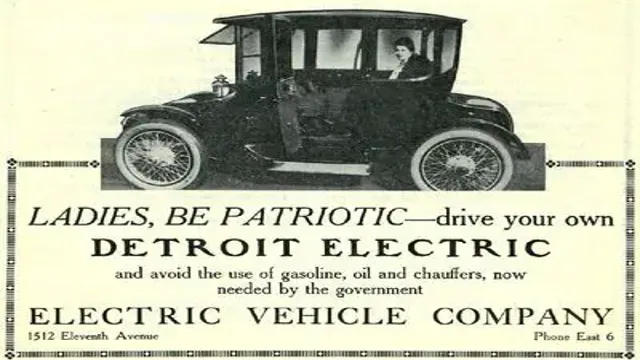The Revolutionary Journey of Electric and Hybrid Cars: A Comprehensive History (PDF)
Have you ever wondered about the history of electric and hybrid cars? It’s interesting to note that the concept of electric cars dates back to the 1830s, and the first hybrid car was developed in 189 However, it wasn’t until more recent times that electric and hybrid cars have gained popularity due to the rise of environmental concerns and advancements in technology. In this blog, we’ll delve into the past, present, and future of these eco-friendly vehicles, exploring their unique features, benefits, and potential impact on our lives and the planet.
Whether you’re a car enthusiast or just curious about the world around you, join us on this journey through the fascinating world of electric and hybrid cars.
The Beginning
Have you ever wondered about the history of electric and hybrid cars? The “Electric and Hybrid Cars: A History” PDF takes us through the journey of how electric and hybrid cars came to be. The concept of electric cars dates back to the early 1800s, but mass production didn’t occur until the late 1800s. However, the popularity of the gasoline-powered car quickly overshadowed electric cars, leading to a decline in their production.
It wasn’t until the 1990s that the demand for hybrid cars began to grow, with the introduction of the Toyota Prius. Since then, we have seen a significant increase in the development and production of electric and hybrid cars as society grows more environmentally conscious. The “Electric and Hybrid Cars: A History” PDF provides a detailed account of the breakthroughs, challenges, and future prospects of these innovative cars that have the potential to change the automotive industry as we know it.
Early Development of Electric and Hybrid Cars
The early development of electric and hybrid cars can be traced back to the 19th century when inventors first experimented with electricity as a source of propulsion. One of the first electric cars was built in 1837 by Robert Davidson, a Scottish inventor who created a small electric locomotive that could carry a few passengers. Later on, in the 1890s, electric cars became more popular in cities due to their lack of noise and pollution.
It was during this time that hybrid cars were also first conceptualized by Ferdinand Porsche in 1900, who designed a car that used an internal combustion engine and electric motors. Though the technology was rudimentary by today’s standards and early electric and hybrid cars had limited range and speed, these pioneers paved the way for modern cars that use electricity to power their motors. Today, electric and hybrid cars are becoming increasingly common on roads worldwide as a greener alternative to traditional internal combustion engine vehicles.
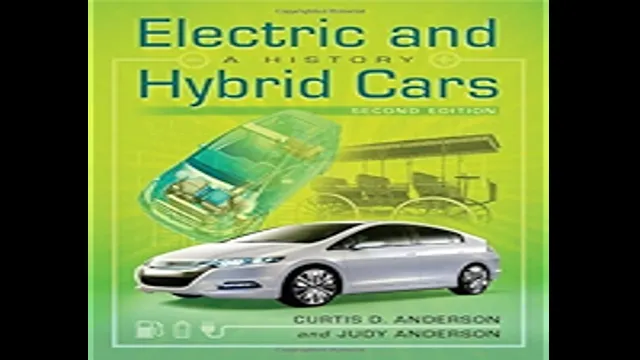
The First Electric Vehicle and Hybrid Cars
When we think of electric cars and hybrid vehicles, we may immediately picture modern cars that feature sleek designs and cutting-edge technology. However, the concept of an electric vehicle dates all the way back to the 19th century! The first electric car was built in the late 1800s, and it was able to travel about 25 miles on a single charge. While these early electric cars were considered innovative, they were also quite expensive and not widely accessible.
It wasn’t until the 1990s that hybrid cars became more widely available. These vehicles combine traditional gasoline power with electric power to create a more fuel-efficient ride. Today, as we continue to explore new ways to reduce emissions and protect our environment, electric and hybrid cars have become increasingly popular.
In fact, many people see them as key to creating a more sustainable future for our planet.
The Rise of Electric Cars
The history of electric and hybrid cars dates back to the early 19th century when inventors like Robert Anderson, Thomas Davenport, and Sir David Salomon created the first working electric vehicles. However, it wasn’t until the 21st century that electric cars really started to gain popularity, with the introduction of the Tesla Roadster in 200 This vehicle had a range of over 200 miles and could go from 0-60mph in under 4 seconds, making it a serious competitor to gas-powered sports cars.
Since then, electric cars have continued to evolve and improve, with companies like Nissan, Chevrolet, and BMW joining the race with their own electric models. Hybrid cars, which combine electric motors with a traditional gasoline engine, have also been gaining popularity, with models like the Toyota Prius becoming a common sight on roads across the world. In recent years, concerns about climate change and the environmental impact of gas-powered vehicles have led to an increased interest in electric and hybrid cars, with many people now seeing them as the future of transportation.
The Environmental Benefits of Electric Cars
Electric cars have been gaining popularity in recent years, and for good reason. Not only are they extremely efficient, but they also have a positive impact on the environment. Traditional gasoline-fueled cars emit harmful pollutants into the atmosphere, contributing to global warming and air pollution.
Electric cars, on the other hand, produce zero tailpipe emissions, making them a cleaner alternative for transportation. In addition to reducing our carbon footprint, electric cars also help decrease our dependence on fossil fuels. By using renewable energy sources like solar or wind power to charge their batteries, electric cars contribute to a cleaner and more sustainable future.
It’s no wonder that more and more people are making the switch to electric cars, and with advancements in technology, they are becoming more affordable and accessible than ever before.
Government Incentives for Electric Cars
The rise of electric cars is transforming the way we think about transportation, and governments around the world are taking notice. Many countries have implemented incentives to encourage people to make the switch from gas-powered vehicles to electric ones. These incentives can take many forms, such as tax credits, rebates, and exemptions from various fees.
For example, in the United States, buyers of electric vehicles can qualify for a federal tax credit of up to $7,500. In Norway, electric vehicles are exempt from a variety of taxes and fees, including the value-added tax, which can make them significantly cheaper than their gas-powered counterparts. With more and more countries committing to reducing their carbon emissions, it’s likely that these incentives will only become more generous in the coming years.
So, if you’ve been considering an electric car, now is a great time to make the switch and take advantage of these government incentives!
Tesla and Other Electric Car Companies
The rise of electric cars has been a hot topic in recent years, with major car companies such as Tesla leading the charge towards more sustainable transportation. While electric cars have been around for a while, advancements in technology have made them an increasingly viable option for those looking to reduce their carbon footprint. In addition to Tesla, other companies such as Nissan and Chevrolet have produced popular electric models, and more car manufacturers are expected to follow suit in the coming years.
Electric cars offer a wide range of benefits, such as reduced emissions, lower operating costs, and a smoother and quieter driving experience. However, there are still some challenges to overcome, such as the limited range of some models and the need for more charging infrastructure. Nonetheless, the future looks bright for electric cars, and it’s exciting to see the positive impact they can have on the environment.
The Emergence of Hybrid Cars
Electric and hybrid cars have come a long way since they were first introduced to the market. In the early 1900s, electric vehicles were actually more popular than gasoline-powered ones, but advancements in oil and gas extraction technology made the latter far cheaper and more accessible. It wasn’t until the 1990s that electric and hybrid cars started making a comeback, thanks to concerns about air pollution and rising fuel costs.
The Toyota Prius, introduced in 1997, was the first widely successful hybrid car, and it paved the way for other manufacturers to enter the market. Today, there are many different electric and hybrid models available, from small city cars to luxury SUVs, and they continue to gain popularity with consumers who are looking for more environmentally friendly options. The electric and hybrid cars a history pdf can provide further insight into the development of these vehicles and the challenges that they have faced along the way.
What are Hybrid Cars?
Hybrid cars have recently become a popular topic of discussion among drivers, environmentalists, and car manufacturers. A hybrid car combines a traditional gasoline engine with an electric motor and battery to provide improved fuel efficiency and reduce emissions. This emergence of hybrid cars is largely driven by the increasing concern for the environment and the need to reduce fossil fuel consumption.
With a hybrid car, drivers can experience the performance and range of a traditional car while reaping the benefits of lower fuel costs and less damage to the environment. While hybrid cars are still relatively new, they have quickly established themselves as a viable alternative to traditional gasoline-powered vehicles. As more car manufacturers invest in the development of hybrid technology, we can expect to see even more innovative and eco-friendly models in the near future.
So, if you’re looking for a car that can provide both efficiency and performance, a hybrid car might just be the perfect choice for you.
The Advantages of Hybrid Cars Over Electric Cars
The emergence of hybrid cars has brought forth many advantages over electric cars. With hybrid cars, you can enjoy the benefits of both gasoline-powered cars and electric cars. It goes without saying that hybrid cars have a longer range than electric cars, so you don’t have to worry about finding a charging station every time you need to hit the road.
Hybrid cars also produce fewer emissions compared to traditional gasoline-powered cars, which is better for both the environment and your wallet. Another advantage of hybrid cars is that they offer smoother and more efficient driving in both urban and highway driving. With all these benefits, it’s no wonder hybrid cars have become a popular choice for many.
The Future of Electric and Hybrid Cars
Electric and hybrid cars have come a long way since their early days. A good resource to learn about their history would be the “Electric and Hybrid Cars: A History” PDF, which explores their evolution and impact on the environment and society as a whole. With the advancement of technology, electric and hybrid cars are becoming more and more popular.
Major car manufacturers like Tesla, Toyota, and Nissan are investing heavily in electric vehicle development, motivated by the urgent need to reduce carbon emissions and dependence on fossil fuels. However, the future of electric and hybrid cars is not without its challenges, such as the need for more charging infrastructure and battery technology improvements. Despite these challenges, many experts predict electric and hybrid cars will become the norm rather than the exception in the coming years, with many countries pledging to gradually phase out all fossil fuel-powered vehicles.
As consumers become more environmentally conscious and the push for sustainability becomes stronger, the future looks bright for the electric and hybrid car industry.
Conclusion
In conclusion, the history of electric and hybrid cars has been a rollercoaster ride full of peaks and valleys. From the early days of electric cars in the 1800s to the rise of gasoline-powered vehicles in the 20th century, it seemed like electric and hybrid cars were destined to be relegated to the fringes of the automotive industry. But with advancements in technology and a growing awareness of the impact of fossil fuels on the environment, electric and hybrid cars are making a comeback.
They’re no longer seen as a novelty, but as a practical and sustainable alternative to traditional cars. So, whether you’re a die-hard petrolhead or an eco-conscious driver, it’s hard to deny the exciting future that electric and hybrid cars have ahead of them, and the important role they’ll play in shaping the automotive industry for years to come.”
FAQs
What is the content of the book “Electric and Hybrid Cars: A History”?
The book discusses the history and development of electric and hybrid cars, from their early beginnings to modern-day advancements.
Who authored “Electric and Hybrid Cars: A History”?
The book was written by Curtis D. Anderson and Judy Anderson.
Is “Electric and Hybrid Cars: A History” available in digital format?
Yes, the book is available in both print and digital formats, including PDF.
What makes “Electric and Hybrid Cars: A History” a recommended reading for enthusiasts of electric cars?
The book offers a comprehensive overview of the evolution of electric and hybrid cars, their technological advancements, environmental benefits, and future possibilities.

